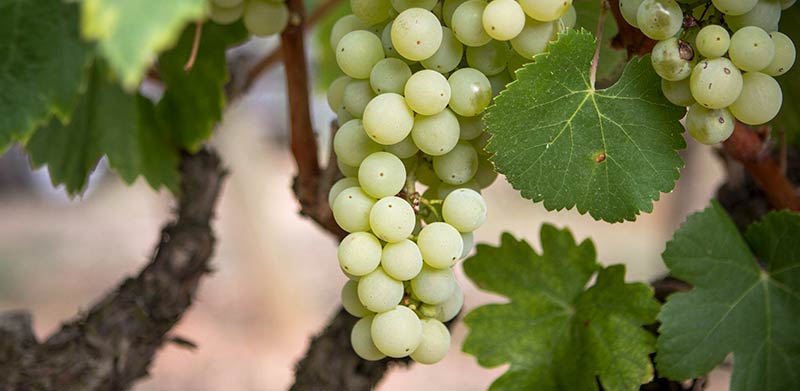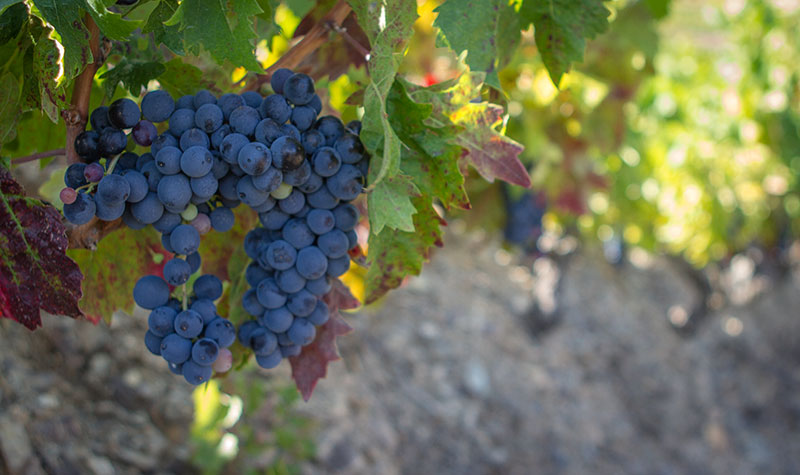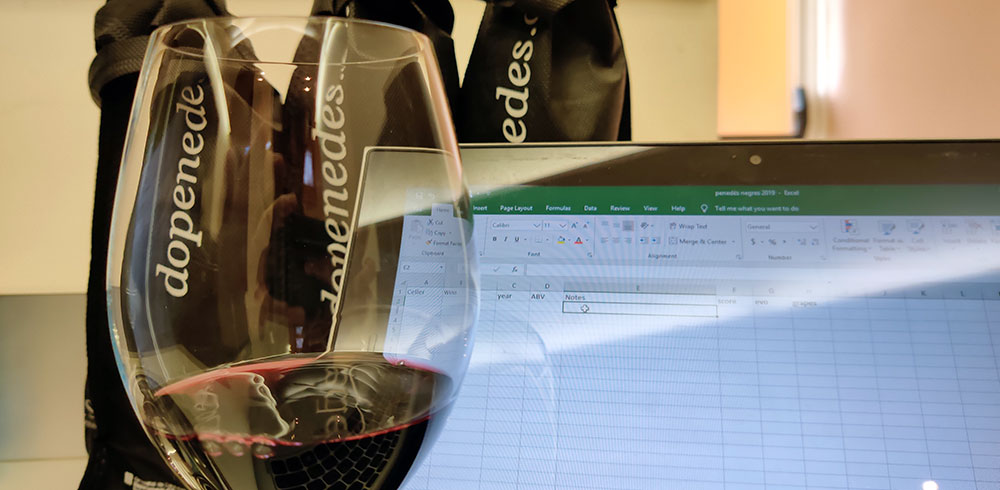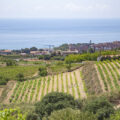If there is one native Spanish grape that a typical wine drinker will know, it is Tempranillo, and for most consumers, the story ends there. In the second half of the 20th century, it was this widespread lack of recognition of Spain’s native grapes combined with the ease of growing French varieties that gave nonnative grapes inroads in Spain. Winemakers didn’t want to explain Monastrell when people already knew and were happy to drink Cabernet Sauvignon. But even though Syrah and Petit Verdot have shown good results, there are countless more vineyards of Cabernet Sauvignon and Merlot that have never made truly compelling wines.
Today, as they seek to stand out in a crowded world of wine, many Spanish winemakers are taking stock of and returning to their native varieties, spurred on by increasingly curious consumers as well as modern viticulture and winemaking practices. Here are a few that sommeliers should know.
White Grapes
Airén
Unbeknownst to many, Arién, a grape grown primarily in Castilla-La Mancha, is actually Spain’s most widely planted grape, besting even Tempranillo with plantings at nearly 300,000 hectares! In 1990, Arién was the most-planted variety in the world; it has since dropped to third place. So where are all of these grapes going? The answer is Spanish brandy. The grapes that do make it into wine typically result in a glass of generic Spanish white wine that’s crisp, light in body, and not too memorable. Some producers challenge that; working with old vines and barrel or amphora aging, they are creating wines with a bit more personality.
Albariño
Albariño (or Alvarinho in neighboring Portugal) has made good headway in terms of recognition, and Rías Baixas is becoming increasingly well known for the grape. The vines have even been exported out of the country and planted around the world, including along the Pacific Coast of the United States. Albariño is native to the area around Portugal’s northern border with Spain. Its flavor ranges considerably, often both fruity and floral with honeysuckle and peach notes. Green apple is another common descriptor. Whichever direction the flavor profile leans, pronounced acidity is common, as well as salinity.
Albillo Real
A grape from the center of Spain that’s been making a resurgence in recent years, Albillo Real is something of an underdog. Once widely regarded as only a table grape, there are now producers in DO Méntrida, DO Vinos de Madrid, and VdlT Castilla y León making excellent, highly aromatic varietal wines from this grape that tend to have a very full mouthfeel. Other wineries in Ribera del Duero have even taken a page out of the Côte Rôtie playbook, adding up to 5% of Albillo to Tempranillo wines for an added aromatic lift.
Garnacha Blanca
Garnacha Blanca is known in Catalan as Garnatxa blanca or Vernatxa Blanca. Like its red variant, Garnacha Negra, this white grape has spread far and wide, albeit usually known by its French name, Grenache Blanc. It’s actually found more outside of Spain (where there are just over 2,000 hectares) than within its borders. France, in particular, has 5,000 hectares, all in the south. It should also be noted that among the total plantings in Spain are obscure grapes that were misclassified as Garnacha Blanca due to oversimplified vineyard assessments in the early 20th century.
Garnacha Blanca is often blended with grapes like Macabeu to bring its high alcohol content in line. Yet when properly handled, Garnacha Blanca can stand up very well to barrel aging. The wineries of DO Terra Alta in Catalonia are producing some of the best varietal wines of the grape with taut minerality, plenty of body, and ripe green fruit.
Godello
This grape is a bit complicated, and while its profile has risen quickly within the sommelier community, it’s at a crossroads in terms of its definition. Godello’s homeland is Galicia, but it can be found under several synonyms throughout the Iberian Peninsula. While it can take well to barrel aging and be refined and “mineral,” it can also be rather undefined and neutral. Newer styles are taking on more floral interpretations that are vibrant and energetic. Godello’s revival in Spain is just 30 years old, so the evolution will undoubtedly continue.
Macabeu
Generally considered native to Catalonia, this grape is sometimes spelled Macabeo or found under the alternate name used in Rioja, Viura. It dominates white grape plantings in northern Spain, mainly due to the vast plantings in Penedès, where it is used as part of traditional Cava blends and for DO Penedès still wines. While young still wines tend to be lightly aromatic, low-production bush vines in Rioja can produce white wines that will age for years, like López de Heredia’s iconic Viña Tondonia. The grape has made inroads in France as well, where winemakers in the Roussillon area have had great success blending it with Grenache Blanc and Carignan Blanc (ironically, all three of these grapes are originally from the Aragón/Catalonia area).
Palomino Fino
Many people are unfamiliar with Palomino Fino, but they know the style of wine made largely from it: Sherry. One of the three authorized grapes for Sherry production (the other two are Moscatel and Pedro Ximénez), it dominates the vineyards of the “Sherry Triangle” in Andalucía, with a total of 14,000 hectares planted. The Canary Islands are the only other place in Spain to come close, with 9,000 hectares of the grape, which they call by its other name, Listán Blanco (which is not a mutation of Listán Negro).
For Sherry production, the oxidative nature of this grape is ideal, but for a varietal wine it can come up a bit short and neutral; acidification is not uncommon.
Verdejo
Not to be confused with Verdelho, grown mainly on Madeira Island, Verdejo is thought to have originated in North Africa and has made its modern home in DO Rueda and Castilla y León. Highly aromatic Verdejo wines are common in DO Rueda, where wines labeled “Rueda Verdejo” must contain at least 85% of the grape, although many are 100%. Aromas can include notes of bay leaf and bitter almonds, which can also come through on the finish.
Xarel·lo
As the interpunct (or punt volat in Catalan) isn’t readily found on most keyboards, this grape is often written as Xarel-lo, Xarel.lo, or Xarello instead. The interpunct is important here, indicating that both l’s should be pronounced (ll is pronounced by most Spanish-speakers as ly).
Given that the interpunct is used in the Catalan language, it will be no surprise that the grape is originally from Catalonia, and 99% of the Xarel·lo vineyards in Spain are located there. The grape is used heavily for Cava production, often blended with Macabeu and Parellada but also produced as a varietal wine in both sparkling and still versions. With excellent body and acidity, its fruit can sometimes be overpowering, but lovely varietal still wines are being crafted. Producers are using varied methods, employing stainless steel tanks, oak barrels, amphora, and concrete eggs for aging, and both selected and ambient yeasts for fermentation.
Red Grapes
Bobal
There are around 90,000 hectares planted to Bobal in Spain, mostly in the Valencia and Castilla-La Mancha regions. The grape’s name comes from the Latin word bovale, meaning bull, referring to the fact that the grape clusters resemble a bull’s head.
Bobal responds well to cultivation at altitudes over 700 meters in elevation. Most of Spain’s Bobal is used for bulk wine, though several wineries have been trying to work the grape into more elegant varietal wines. Generally smooth, it holds less alcohol than many other grapes in Spain (often 11%) and retains its acidity well.
Garnacha
Many think Garnacha is a French grape due to the fame of Châteauneuf-du-Pape, Gigondas, and others in the Rhône Valley. Spelled Garnatxa in Catalan, the grape is from Catalonia and Aragón and is the third most planted red variety in Spain (after Tempranillo and Bobal). It has countless mutations including Garnacha/Garnatxa Blanca, Garnatxa Peluda (Hairy Grenache), and Garnatxa Roja (Grey Grenache). Thankfully, an increasing number of winemakers are starting to see it as a quality grape capable of producing excellent varietal wines due to the bottles that started emerging in the 1990s from Priorat, Catalonia. Red fruit driven, Garnacha can have exceedingly high alcohol (15.5% or even 16% is typical), although this depends on the region, as the higher altitude vineyards in DO Méntrida can produce much lighter wines in terms of body, color, and alcohol.
Mazuelo
Mazuelo originated in Aragón, where it was known in Catalan as Carinyena and in Spanish as Cariñena. However, DO Cariñena does not permit the use of these names. The grape is usually labeled instead as Mazuelo in Spanish, or Samsó in Catalan. The latter is technically an old name for the grape as well, but it unfortunately sounds much like the French Cinsault, though the two are unrelated. Caranyena is yet another variation on the name. In English, the grape is typically known by its French name, Carignan—an ironic twist, as the grape has fared much better in its ancestral home than in France, where it earned a poor reputation due to overproduction.
The old bush vines of Mazuelo in Catalonia have done particularly well, with the finished wines carrying good acidity and floral notes, verging on light violets in the best examples. The grape is often considered only for blending, but many varietal wines are being produced these days. There are also excellent Mazuelo/Garnacha blends.
Mencía
Found mostly in northwestern Spain, Mencía has seen a significant resurgence due to the popularity of wines from DO Bierzo. It can also be found in DO Valdeorras and DO Ribeira Sacra. The grape’s initial appeal was that it produced light, aromatic wines but this has been changing as winemakers have gained experience and started producing denser, higher-alcohol wines as well. Due to this, taste profiles can vary wildly, but Mencía typically has red cherry and herbal notes.
Monastrell
Long believed to be an ancient grape brought to Spain by the Phoenicians in 500 BCE, documentation has been found dating Monastrell back to at least the 14th century in the Empordà county of Catalonia—though, of course, its Spanish origin can’t be proven fully. Most people won’t know Monastrell by this name, as it’s typically referred to by its French name, Mourvèdre. In Australia, it’s known by the other old Catalan name, Mataró, and in coastal Penedès, it is also known as Garrut.
Monastrell sits just behind Garnacha in terms of overall plantings, with the highest concentration in Murcia. Often rustic in character, varietal bottles are becoming much more common and show a good balance of the grape’s high alcohol, tannins, and blackberry notes.
Tempranillo
This is it, the Spanish grape—and why not? Despite being most famous in the wines from Rioja, it is grown just about everywhere in the country under countless different names, from Jacibiera or Cencibel in Castilla-La Mancha, to Tinta del País in Ribera del Duero, to Ull de Llebre in Catalonia. Tempranillo means “little early one” (tempranillo is the diminutive of temprano, meaning “early”), a name given because it ripens about two weeks earlier than most Spanish red grapes. Many assume Tempranillo is a warm-climate grape, which isn’t necessarily the case. Rather, it needs to be planted in the right soils and in climates that are appropriate for early-ripening grapes in order to thrive.
Over 200,000 hectares are planted to Tempranillo, mainly due to the fact that it’s very pliable. At its most basic, it holds red fruit notes such as strawberry, but it can also develop spice, tobacco, and leather notes, depending on the aging regimen. The wines from Ribera del Duero tend to be a bit denser than those in Rioja and can be full varietal wines, but given its generally neutral aromatic profile, Tempranillo takes well to blending with other grapes such as Garnacha and Mazuelo, which give the finished wines a bit more zing.
Trepat
What was once a relatively unknown, rustic grape in Catalonia, Trepat (also known as Bonicaire in Murcia) has been recuperated at a fast pace. Initially, it was popular for making rosé and going into Cava, but this has given way to pale reds, then deeper, more profound reds. Despite an overall lightness, these show good aging potential. The wines are dominated by fresh red berries and hold excellent levels of acidity. A great deal of effort is being put into the promotion of this grape, specifically in DO Conca de Barberà of Catalonia. It’s one to watch.
More Discoveries
These are just a few of Spain’s native grapes, including a few up-and-coming varieties, but there are many more waiting to be discovered, like Prieto Picudo, Sumoll, Manto Negro, Callet, and Morenillo, to name just a few more. Hopefully, in the next chapter of Spanish winemaking, the country’s abundant native grapes will receive the attention they deserve.





Climate change doesn’t exist. It was invented by the Chinese. Did you not hear?
Yes, I heard this while having a bowl of Chow Mein one day.